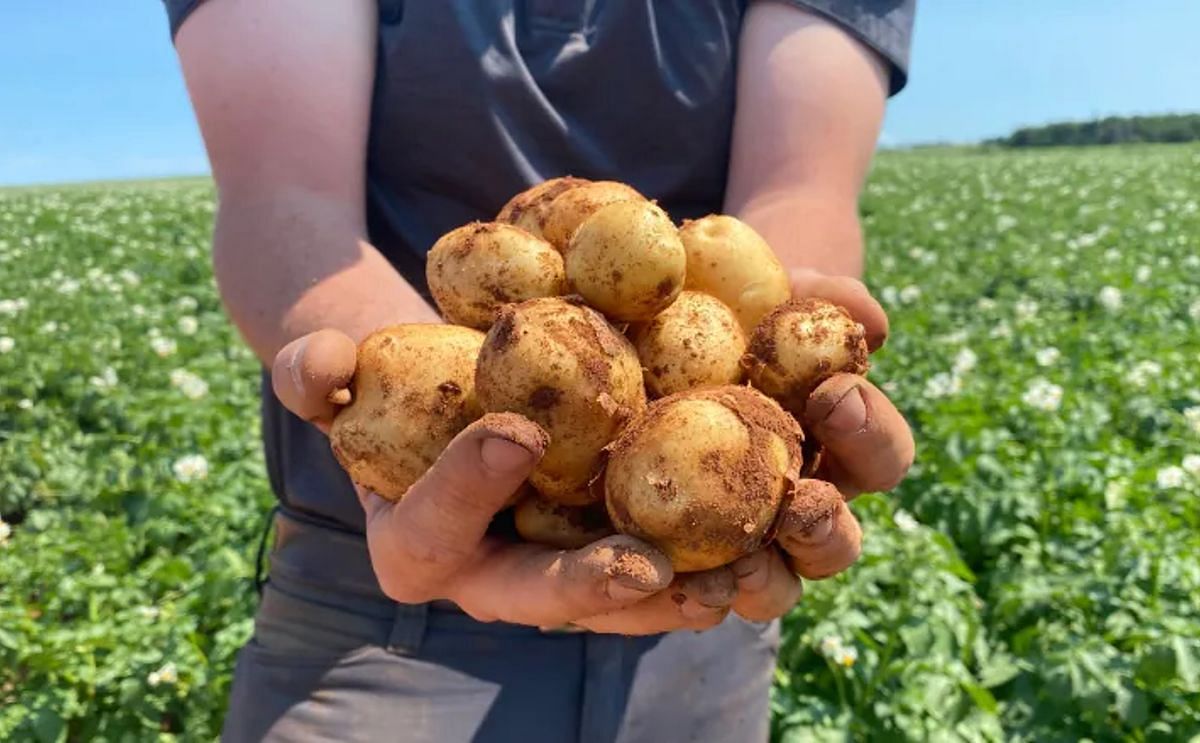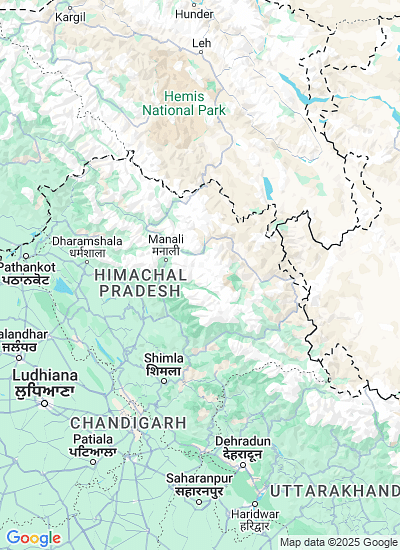Trials of Disease Resistant Potatoes & Fortified Bananas Get Govt Approval of Indian Government
主标签
Indian government approves trials of GM Disease Resistant Potatoes & Fortified Bananas

For the last few months, the Genetic Engineering Appraisal Committee (GEAC), the federal government agency that monitors and approves GM activity, has approved field trials of many GM crops, including rubber and newer cotton varieties. This follows nearly two decades of modest progress in the field since the approval of GM cotton in 2002.
Sanjeev Sharma, Principal Scientist at the Indian Council of Agricultural Research (ICAR)-Central Potato Research Institute (CPRI) :
Late blight is a big worry for potato growers in India, where the potato is one of the most important crops. According to an ICAR assessment, late blight can result in yield losses of up to 50%.
The illness can also make potatoes unfit for human consumption or processing, resulting in additional economic losses. According to ICAR data, the average annual loss due to late blight in India is estimated to be 15% of overall crop.
The disease is widespread across the country, but losses are higher in hilly areas, where the crop is produced under rainfed circumstances, than in plains.
Sanjeev Sharma:
When late blight strikes, it can cost farmers Rs 70,000 crore per year, according to Sharma. Traditionally, pesticides and fungicides have been used to manage the disease, raising the expense of cultivation. Furthermore, when the pathogen is repeatedly exposed to fungicides, it develops resistance to them.
Sanjeev Sharma:
Under a material transfer agreement with scientists in the United States, the team began by importing GM potatoes. Sanjeev Sharma:
At this point, researchers may only sow the seeds in a total of 20 acres at a time. Each location in the BRL-2 experiments can use up to a hectare (2.47 acres) of land.
Sanjeev Sharma:
Siddharth Tiwari, a researcher at the National Agri-Food Biotechnology Institute (NABI)-Mohali, has been researching on increasing bananas' nutritional profile.
Siddharth Tiwari:
According to Tiwari, vitamin A and iron supplements in pill form are not always feasible, and strengthening existing foods with these nutrients may be a better option. In 2012, NABI Mohali began working on the project.
To introduce pro-Vitamin A, the researchers took the NEN-DXS2 gene from Nendran, a typical banana variety in Kerala. The researchers turned to rice for OsNAS1 and OsNAS2 genes that express iron. Siddharth Tiwari:
Siddharth Tiwari:
Sanjeev Sharma, Principal Scientist at the Indian Council of Agricultural Research (ICAR)-Central Potato Research Institute (CPRI) :
"It is understandable to be concerned about the crop's safety. Because we have free speech, campaigners have the right to share their concerns. However, it is the responsibility of a scientist to produce facts and data to demonstrate that the crop is safe to ingest."Sharma has been working on developing a potato variety that can tolerate the fungal disease late blight since 2005. The pathogen Phytophthora infestans causes late blight. It can also harm tomatoes and other members of the Solanaceae family, which includes peppers & brinjals. In cool, wet weather, the disease spreads quickly and can cause substantial damage to potato crops.
Late blight is a big worry for potato growers in India, where the potato is one of the most important crops. According to an ICAR assessment, late blight can result in yield losses of up to 50%.
The illness can also make potatoes unfit for human consumption or processing, resulting in additional economic losses. According to ICAR data, the average annual loss due to late blight in India is estimated to be 15% of overall crop.
The disease is widespread across the country, but losses are higher in hilly areas, where the crop is produced under rainfed circumstances, than in plains.
Sanjeev Sharma:
"After wheat and rice, potatoes are the world's third most significant food crop. The crop is produced on 2.2 million hectares in India, with an annual production of roughly 53 million metric tonnes. The productivity is approximately 23 to 24 tonnes per hectare."He further stated that 90% of the crop is cultivated in the subtropical Indo-Gangetic area, where late blight comes in epidemic form after every third or fourth crop cycle.
When late blight strikes, it can cost farmers Rs 70,000 crore per year, according to Sharma. Traditionally, pesticides and fungicides have been used to manage the disease, raising the expense of cultivation. Furthermore, when the pathogen is repeatedly exposed to fungicides, it develops resistance to them.
Sanjeev Sharma:
"During the course of eight to ten years, diseases acquire resistant to even new varieties of blight-resistant crops generated through inbreeding."To go around this, the researchers created a novel potato variety that expresses a gene known as the RB gene. This gene, derived from the wild potato species Solanum bulbocastanum, makes the plant resistant to late blight.
Under a material transfer agreement with scientists in the United States, the team began by importing GM potatoes. Sanjeev Sharma:
"That variety was cross-bred with the most popular Indian variety, Kukri Jyoti, which accounts for more than 21% of the land in India."KJ66, the new GM cultivar, will now go through Biosafety Research Level (BRL)-1 and BRL-2 studies. The BRL-1 trials are constrained experiments in which each trial location's seeding is limited to one acre of land.
At this point, researchers may only sow the seeds in a total of 20 acres at a time. Each location in the BRL-2 experiments can use up to a hectare (2.47 acres) of land.
Sanjeev Sharma:
"We intend to carry out the trial in six different agri-ecological zones, three in the highlands and three in the subtropical plains. We have acquired no-objection certificates from the governments of Meghalaya and Himachal Pradesh for the trials. We've also approached other states."The scientists intend to sow the initial seeds for the trial in Shimla and Shillong during the Kharif season this year. Because trials in diverse ecological zones will help scientists better assess if the variety is suitable for the entire country or if it must be limited to specific places, the CPRI has also requested permission from Uttar Pradesh, Madhya Pradesh, and Punjab.
Siddharth Tiwari, a researcher at the National Agri-Food Biotechnology Institute (NABI)-Mohali, has been researching on increasing bananas' nutritional profile.
Siddharth Tiwari:
"GM technology is the most effective technique to improve the qualities of bananas. We can only rely on biotechnology advancements to improve banana features."The battle for Tiwari's team is not against a crop disease. Rather, they intend to combat anaemia and vitamin A deficiency with a widely available and inexpensive food source.
According to Tiwari, vitamin A and iron supplements in pill form are not always feasible, and strengthening existing foods with these nutrients may be a better option. In 2012, NABI Mohali began working on the project.
To introduce pro-Vitamin A, the researchers took the NEN-DXS2 gene from Nendran, a typical banana variety in Kerala. The researchers turned to rice for OsNAS1 and OsNAS2 genes that express iron. Siddharth Tiwari:
"We hope to start our trials within the next couple of months now that we have all the licences."This year, event selection trials will be held in Tamil Nadu, Gujarat, Assam, and Punjab. All trials will take place on institutional grounds.
Siddharth Tiwari:
"When the plants bear fruit for two years, the scientists will analyze which lines are most promising, and those will be chosen for further BRL experiments."Because the banana crop takes two years to bear fruit, the NABI Mohali team will need at least three years to identify crop lines that show potential for additional experiments. The team currently has 20 different GM banana kinds that they intend to test.
Like to receive news like this by email? Join and Subscribe!
Get the latest potato industry news straight to your WhatsApp. Join the PotatoPro WhatsApp Community!
精选企业
Sponsored Content
Sponsored Content
Sponsored Content
Sponsored Content







